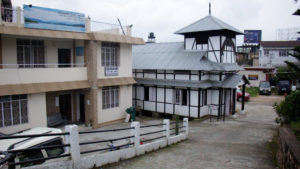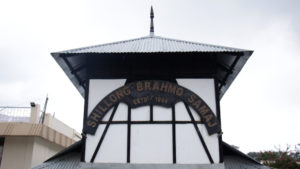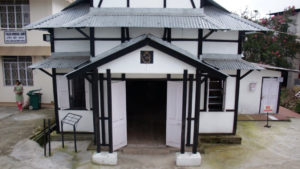Over the past 100 years, Shillong has witnessed a sea of changes – in education, administration, military, socio-economic and cultural fronts, and its transformation can be traced to the late 1800s after it became the capital of the Non-Regulation Province of Assam.

The selection of Shillong as the capital of the Chief Commissioner’s Province in 1874 marked the arrival of many socio-religious groups – the Brahmo Samaj being one of the significant ones.
The Brahmo Samaj was a reformist movement to reform the Hindu society of social and religious evils and eradicate practices like “Sati” and “Caste System” which were rampant at that time. It was a monotheistic religion that propagated the belief in the fatherhood of God and the brotherhood of mankind. It began during the Bengali Renaissance in the 19th century.
Founded by Raja Ram Mohan Roy in 1828, it was one of the most influential religious movements in India and played an important part in the regeneration of modern India.
In this episode of Shillong’s Iconic Structures, we are featuring the Shillong Brahmo Samaj (Prayer Hall), established 130 years ago by Brahmo emissaries, most of whom were well-placed government servants who hailed from Sylhet and neighbouring districts in Bengal.
The ideals of the Samaj were brought to the Northeast by Assamese elites who studied in Calcutta (now Kolkata) in the mid-19th century. Meghalaya and Assam were amongst the northeastern states that were hugely influenced by the ideals of the Samaj.

Established on November 8, 1874, in Shillong, the Brahmo Samaj managed to expand its base to different parts of the Khasi and Jaintia Hills – predominantly in Sohra (then Cherrapunjee), Shella, Laitkynsiew and Sohbar, in the late 1800s and early 1900s.
The Brahmo emissaries involved in the formation of  the Samaj in Shillong in the early years were Raj Chandra Choudhury, his wife Hemant Kumari Choudurani, Rai Bahadur Prakash Chandra Deb, Brajendra Nath Sen, Aukhoy Kumar Chatterjee, Sadaya Chandra Das, and Rai Bahadur Sivanath Dutta.
the Samaj in Shillong in the early years were Raj Chandra Choudhury, his wife Hemant Kumari Choudurani, Rai Bahadur Prakash Chandra Deb, Brajendra Nath Sen, Aukhoy Kumar Chatterjee, Sadaya Chandra Das, and Rai Bahadur Sivanath Dutta.
 the Samaj in Shillong in the early years were Raj Chandra Choudhury, his wife Hemant Kumari Choudurani, Rai Bahadur Prakash Chandra Deb, Brajendra Nath Sen, Aukhoy Kumar Chatterjee, Sadaya Chandra Das, and Rai Bahadur Sivanath Dutta.
the Samaj in Shillong in the early years were Raj Chandra Choudhury, his wife Hemant Kumari Choudurani, Rai Bahadur Prakash Chandra Deb, Brajendra Nath Sen, Aukhoy Kumar Chatterjee, Sadaya Chandra Das, and Rai Bahadur Sivanath Dutta.Located at Khyndai Lad, just opposite the old Assembly building, this wooden structure with pitch-roofing stands out from the rest of the concrete structures in the commercial hub of the city.
The Brahmo community of Khasi Hills, though a microscopic minority, played a catalytic role in the socio-cultural and religious regeneration of the Khasi society. Their pivotal role might be forgotten as of today but historically, their contributions cannot be ignored.
(Watch the full version of the story only on our YouTube channel @TheShillongTimes.)



